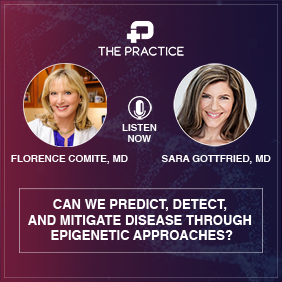
by Bianca Garilli, ND
Depression and anxiety are two of the most common mental health disorders across the globe according to the World Health Organization (WHO); both conditions can range from mild to severe and may endure for months to years. Depression affects approximately 300 million people worldwide, or ~ 4.4% of the entire world’s population, and is a major contributor to suicide.1 Anxiety is nearly as prevalent, estimated to affect over 260 million people (3.6% of the global population).1 Gender- and age-related differences exist when exploring global data on depression and anxiety further:1
Depression
- Depression is more common in females than males (5.1% vs. 3.6%)
- The rate of depression varies by age, peaking in females aged 55-74 years
- Although depression does occur in children younger than 15, it does so at a lower rate than in other age groups
- “Globally, depressive disorders are ranked as the single largest contributor to non-fatal health loss (7.5% of all YLD).” (years lived with disability [YLD])
Anxiety
- Anxiety is more common in females than males (4.6% vs. 2.6%)
- The rate of anxiety is similar across most age groups, although there is a trend towards lower prevalence in older individuals
- “Anxiety disorders are ranked as the 6th largest contributor to non-fatal health loss globally and appear in the top 10 causes of YLD in all WHO Regions.”
Depression and anxiety are frequently experienced concurrently. Depression and anxiety often have similar initiators, although both also have unique antecedents, triggers, and mediators (ATMs). The next section will highlight some of the major etiologies of these conditions, paying particular attention to the hormonal component.
Depression
Depression can alter the way a person perceives the world and themselves, including how they feel, think, and behave, thus often leading to changes in an individual’s emotional, physical, mental, and spiritual wellbeing.2 The sad and “low” or “blue” mood and sometimes overwhelming sense of despair that are experienced during depression may cause some people to even contemplate harming themselves.2 The causes of such intense, all-consuming effects on mood are multiple, ranging from physical and psychological trauma to intense and chronic stress, thyroid conditions, and other illnesses.2
Genes
Depression is often seen in families, indicating a potential genetic link.2 A recent study examined over 9 million single-nucleotide polymorphisms (SNPs), and researchers identified 44 possible SNPs that may play a role in major depressive disorder (MDD).3 Some of these SNPs are also associated with other physiological processes or conditions, such as ADHD, weight, brain inflammation, dysregulation of the fight-or-flight response (i.e., sympathetic nervous system), as well as DNA methylation.3
Neurotransmitters
Variance in brain chemistry also plays a major role in depression risk; these include critical neurotransmitters such as dopamine, GABA, serotonin, and tryptophan.3 The combination of physical and/or emotional stress coupled with a genetic susceptibility may be a key intersection point propelling a cascade of biologic events, including increased levels of pro-inflammatory cytokines and decreased levels of neurotransmitters.3 Fluctuations in these chemical messengers may exacerbate dysregulation of the hypothalamic-pituitary-adrenal (HPA) axis, resulting in increased levels of cortisol, which can contribute to hippocampal atrophy, hypofunction of the prefrontal cortex, hyperactivity of the limbic system, and eventual clinical symptoms of depression3 This is a simplified description of a very complex, multifactorial, and variable pathway that is still not fully understood.
Hormones
Hormonal fluctuations, particularly tied to certain times of life for women such as pregnancy, postpartum, premenstrual, perimenopausal, and menopausal period, as well as fluctuations experienced with thyroid conditions, can significantly contribute to depression.4 For women, hormone-related depression may be linked to the cyclical levels of estradiol, the predominant circulating estrogen.4 This is because estradiol and other gonadal steroids have an effect “on neurotransmitter systems and mood regulatory systems, interacting with biological vulnerability and life stress.”4
It has been hypothesized that fluctuating levels of estradiol may directly modify the cognitive and emotional response to life stressors through estradiol’s influence on the activity of emotional regulation nodes and circuits.4 For example, during times of low estradiol levels, women may react more negatively to stressful events or negative emotional information due to changes in the effective regulation systems.4 This period of low estradiol may also reduce the individual’s ability to modulate previously stored negative information from prior experiences.4 These prior negative experiences may be one of the culprits in increasing negative affect or depression in females going through low estradiol phases such as during late luteal cycle (i.e., when premenstrual syndrome [PMS] can occur), the postpartum period, and menopause.4
Conversely, during high-estradiol phases, there is improved ability to modulate stressful situations and negative information without moving into a depressive state.4 This shows the potential for estradiol to act as a buffer to negative inputs and situations and possibly its ability to reduce the effects of previously experienced negative situations and information.4 Longer estrogen exposure may also prove protective for depression. A study of 1,306 women observed a lower risk for depression in those with longer exposure to estradiol, i.e., women with early menarche and later menopause.5 This increased estrogen exposure was significantly associated with a reduced risk of depression during menopause and for up to 10 years after.5 It has been proposed that these positive findings may be due in part to estradiol’s effect on serotonin, a key brain neurotransmitter involved in the pathophysiology of depression.5
Anxiety
Anxiety is a state in which an individual experiences fear, panic, and/or terror, often out of proportion to the actual situation and which can, in some cases, spiral into a panic attack.6 Causes of anxiety are various and may include an underlying medical condition such as thyroid disease (particularly hyperthyroidism), heart disease or diabetes, asthma, irritable bowel syndrome, and others.6 Additionally, withdrawal, abuse, or side effects from medications, other drugs, or alcohol can also increase the susceptibility for anxiety.6 Certain risk factors that can precipitate anxiety have been identified; the list is quite broad, ranging from heredity/genetics to trauma, particularly as a child or as a consequence of traumatic adult experiences, to unmitigated or extremely high stress.6 As mentioned before, anxiety can manifest concurrent with other mental health disorders, such as depression.6 Let’s now explore genetic and hormonal influences of anxiety.
Genetics
The genetics of anxiety are complex – one investigation reports heritability of generalized anxiety disorder (GAD) to be ~ 30%, with GAD being closely related to childhood separation anxiety, social phobia, and panic.7 Anxiety, which typically occurs later in developmental stages, often shares a genetic origin with other internalizing disorders such as major depressive disorder (MDD).7 Some of the more well-known genes and SNPs thought to be associated with anxiety include: 5-HTT (serotonin transporter protein), 5-HT1A (serotonin 1A receptor), MAOA (“human warrior gene”; encodes enzyme monoamine oxidase A), BDNF (encodes brain-derived neurotrophic factor), COMT (encodes enzyme catechol-O-methyltransferase), as well as many others.7
Hormones
Just like in depression, estrogen may play a central role in the anxiety experienced by women. Knowing that anxiety afflicts women nearly 2x as often as men, it’s important to elucidate gender differences that prime anxiety to better treat patients.1 Interestingly, until the past two decades, a paucity of research had been completed on gender differences underlying mood disorders (and many other health conditions). It was not until 1994 when US federal law (The NIH Revitalization Act of 1993, PL 103-43)8 went into effect, “requiring researchers funded by the National Institutes of Health — the world’s largest single funder of biomedical research — to include women as well as men in clinical studies and analyze their results by sex or gender.”9
We know that estrogen plays a role in the higher propensity for anxiety in women. There is a higher risk of developing anxiety at menarche, a time typified by an increase in circulating estradiol.10 At the other end of the spectrum, anxiety is also increased when estrogen levels drop during the end of the luteal phase of the menstrual cycle, as well as during the postmenopausal years.10
Additional insights on female-centric risks related to mental wellness remain to be uncovered by future investigations. The higher incidence of anxiety in females than in males, “provides reason enough to acknowledge, instead of ignore, the complexity introduced by the female menstrual cycle and to intensify research on sexually dimorphic developmental programming of the brain and on sex-dependent stress coping mechanisms in adulthood.”11 The elucidation of the unique, complex interactions between mood disturbances and disorders and genes, hormones, and neuroendocrine systems (including the gut-brain axis) will facilitate personalization and optimization of healthcare in the mental health arena, for depression, anxiety, and beyond.
Citations
- WHO. Depression and other common mental disorders; global health estimates. http://apps.who.int/iris/bitstream/handle/10665/254610/WHO-MSD-MER-2017.2-eng.pdf;jsessionid=C8622E9408BA941456F5140CBADDE65D?sequence=1. Accessed January 15, 2019.
- Mayo Clinic. Depression. https://www.mayoclinic.org/diseases-conditions/depression/symptoms-causes/syc-20356007. Accessed January 23, 2019.
- Wray NR et al. Genome-wide association analyses identify 44 risk variants and refine the genetic architecture of major depression. Nat Genet. 2018;50(5):668-681.
- Newhouse P et al. Estrogen, stress, and depression: a neurocognitive model. JAMA Psychiatry. 2015;72(7):727-729.
- Marsh WK et al. Lifelong estradiol exposure and risk of depressive symptoms during the transition to menopause and postmenopause. Menopause. 2017;24(12):1351–1359.
- Mayo Clinic. Anxiety. https://www.mayoclinic.org/diseases-conditions/anxiety/symptoms-causes/syc-20350961. Accessed January 23, 2019.
- Gottschalk MG et al. Genetics of generalized anxiety disorder and related traits. Dialogues Clin Neurosci. 2017;19(2):159–168.
- NIH. NIH policy and guidelines on the inclusion of women and minorities as subjects in clinical research. https://grants.nih.gov/grants/funding/women_min/guidelines.htm. Accessed February 20, 2019.
- Mazure CM et al. Twenty years and still counting: including women as participants and studying sex and gender in biomedical research. BMC Womens Health. 2015;15:94.
- Borrow AP et al. Estrogen receptors modulation of anxiety-like behavior. Vitam Horm. 2017;103:27-52.
- Donner NC et al. Sex differences in anxiety and emotional behavior. Pflugers Arch. 2013;465(5):601-626.
Bianca Garilli, ND, USMC Veteran
Dr. Garilli is a former US Marine turned Naturopathic Doctor (ND). She works in private practice in Northern California and consults with naturopathic and Functional Medicine leaders, including the Institute for Functional Medicine and Metagenics. She is passionate about optimizing health and wellness in individuals, families, companies and communities- one lifestyle change at a time. Dr. Garilli has been on staff at the University of California Irvine, Susan Samueli Center for Integrative Medicine and is faculty at Hawthorn University. She is the creator of the Military and Veteran Health Initiative and is the current Past-President of the Children’s Heart Foundation, CA Chapter.






